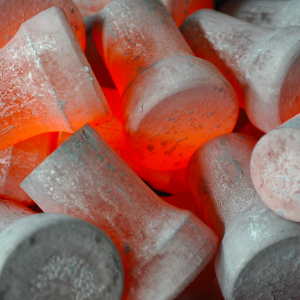Hot chamber die casting process | Die casting advantages
What Is Hot Chamber Die Casting?
Die casting is a manufacturing process that uses pressure to push molten metal into a mold, creating an object of metal when it cools. There are two different methods used in the die casting process: hot chamber and cold chamber. Hot chamber die casting refers to the fact that the molten metal is stored within the machine or is melted in an attached pot and not in a separate blast furnace.
In this article, we’ll be discussing the hot chamber method — how it works, some advantages and disadvantages, the metals used for the die casting, and the machine used to make the cast.
Hot Chamber Die Casting Process
Hot chamber die casting machines use a melting pot that is in the casting machine. Zinc and magnesium are often used in this process due to their lower melting points. In this process, the zinc or magnesium supply is connected to the machine. Here’s how the process works:
- Injection. A hot chamber is filled with molten metal. At this point, a plunger is raised, and the metal fills the mold.
- Sealing of the chamber. The plunger begins to move downward. This forces the metal into the cavity of the mold and seals it off once it is filled.

- Cooling. Once the mold has been sealed off, it is cooled and the metal solidifies, taking the shape of the mold.
- Ejection. After the metal has solidified, the die opens and the casting (the cooled metal) is ejected, preparing the mold for the next object to be made.
While the process itself sounds fairly simple, it does require a special machine to do the work. Let’s take a look.
Components of the Hot Chamber Die Casting Machine
The different components that make up the machine are:
- Injection mechanism. This consists of a furnace to melt the metal and a chamber to store the molten metal. It is attached to the machine by a gooseneck (a metal tube to feed the metal to the machine).
- Die. This is the mold that is to be filled with the metal. This will give the product its shape.
- Piston and Plunger. The piston rises to let the metal into the die. The plunger then seals up the port and the die fills with metal. It holds this position until the metal solidifies.
- Ejector pins. After the metal has become solid, the die opens, the plunger allows any leftover molten metal to return to the chamber, and the ejector pins remove the object from the die.
Hot Chamber Die Casting Advantages and Disadvantages
Numerous advantages are offered using hot chamber die casting. The most notable is the faster cycle time, allowing companies to increase productivity and reduce their costs. This method is also more efficient, has less metal waste, and the machinery has a longer life since the metals have a lower melting point.
Of course, there are always a few disadvantages as well. In the case of hot chamber die casting, the biggest drawback is porosity. The die casting will lead to the formation of blisters on the metal’s surface if it is fully treated. Since it cannot be fully treated, there are pores present on the surface, which can lead to air pockets, weakening the metal in extreme cases.
Hot chamber die casting offers many benefits to companies looking to get their metal products available quickly. The die casting process allows for speedy cycle time and the process is fairly straightforward and is able to be used with any metal that has a lower melting point. KICastings has worked with over 5,000 customers to create high-precision, complex parts with the die casting process. If you’re looking for more information, contact us today.

